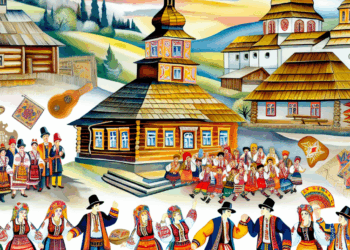Introduction
Bukovina, a region with a rich history and multicultural heritage, continues to attract attention both inside and outside the country. In 2025, the region is looking forward to new challenges and opportunities that relate to politics, culture and sport. In this article, let us look at the key aspects that will affect the Bukovina region in the coming years.
Political changes
New level of decentralisation
Since the last public administration reform, local authorities have more powers. In 2025, further decentralisation is expected, which will allow Bukovyna municipalities to participate more actively in the process of governance and implementation of local initiatives. This may lead to an improvement in the quality of life of local residents and increased public interest in the political process.
EU influence on regional decisions
The Romanian authorities continue to receive funding from the European Union, which has a significant impact on the strengthening of infrastructure, education and healthcare. New projects related to rural development and ecotourism are expected to be implemented in 2025, which could give Bukovina a new economic impetus.
Cultural heritage and its development
Multiculturalism as a fortress of the region
Bukovina is known for its cultural diversity, including Romanian, Ukrainian, Jewish and Moldovan communities. In 2025, cultural initiatives are planned to be actively developed, thus preserving the uniqueness of the region. Local festivals and events dedicated to multicultural heritage will become important events not only for local residents, but also for tourists.
Education and access to culture
The education system in Bukovyna will be actively modernised, which will affect cultural aspects as well. New curricula are expected to be introduced, which will include the study of cultures of different peoples living in the region. This will not only increase the level of tolerance among young people, but will also make it possible to preserve and develop cultural traditions.
Tourism and cultural initiatives
The growing interest in ecotourism and cultural exploration is opening up new horizons for the region. Investments in tourism infrastructure are planned to attract more visitors. By 2025, new cultural itineraries are expected to be created, covering historical and architectural monuments as well as natural attractions.
Sport and Olympic prospects
External investment in sport
Romanian sport has been booming for many years, thanks to the attraction of funding from both the state and private investors. New sports programmes are being developed in Bukovina, especially for young people. This can significantly improve access to sports clubs and increase the sporting achievements of the region.
Preparing for international competitions
In 2025, Bukovyna plans to become a venue for a number of international sporting events. This will not only increase the level of sportsmanship among local athletes, but will also create additional opportunities to promote the region in the international arena.
Problems and challenges
Economic difficulties
Despite many positive changes, Bukovina faces challenges related to economic development. The unemployment rate in some municipalities remains high, which necessitates the creation of new jobs and the development of small and medium-sized enterprises.
Environmental problems
Environmental challenges such as pollution and deforestation also remain relevant. In 2025, local authorities are planning to introduce new environmental protection measures, which will preserve natural resources for future generations.
Conclusion
Taking into account all the above factors, the prospects for Bukovina in 2025 look optimistic, but require concentrated efforts on the part of the authorities, business and local population. The development of the region in political, cultural and sporting spheres will open new horizons and strengthen its position within Romania and beyond. Bukovina, as a bright example of multicultural coexistence, has all chances to become a model for other regions of the country. It is important that these positive changes continue, adjusting to the modern rhythm of life and the needs of society.








